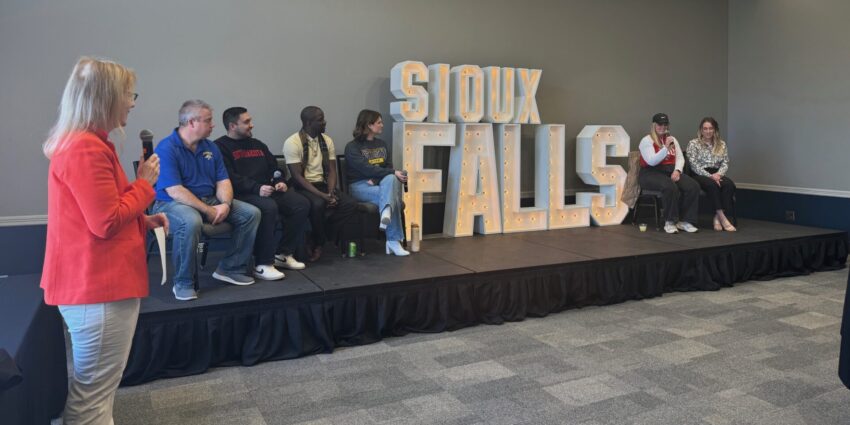Protect against noise-induced hearing loss at work
This piece is presented by Sanford Health.
The average American spends 39 hours a week at work, making the workplace environment a powerful influence on a person’s overall health and well-being.
According to the World Health Organization, noise-induced hearing loss, or NIHL, is the most common, permanent and preventable occupational injury in the world.
Temporary hearing loss comes from short-term exposures to noise, with normal hearing returning after a period of rest, while permanent NIHL can result from a one-time exposure to intense impulse sound, such as an explosion, or from continuous exposure to loud sounds over an extended period of time.
NIHL caused by a loud burst of sound can be immediate and permanent if the eardrum or the bones in the middle ear are damaged.
Permanent NIHL also can be caused by continuous exposure to loud sound and happens gradually. The continuous exposure to noise primarily damages the outer hair cells in the cochlea of the inner ear. An employee might not notice subtle changes in hearing until the loss is more pronounced. For workers experiencing gradual NIHL, sounds may become distorted or muffled at first, but not necessarily softer, making it harder to catch exact words or follow a conversation at a normal volume.
The National Institute for Occupational Safety and Health identifies mining, agriculture, construction, manufacturing, utilities, transportation and the military as industries that run the highest risk of NIHL noise pollution. Miners have the highest incident of noise-induced hearing loss among all occupations.
Sound is measured in units called decibels, and every sound can be given an average decibel rating. For example, the average decibel rating of a normal conversation is 60, while the average decibel rating of sirens is 120.
Sounds of less than 75 decibels are unlikely to cause hearing loss, even after extended periods of time. Noise, or unwanted sound, is considered loud enough to be hazardous when it reaches 85 decibels or higher or if someone has to raise their voice to speak with a person who is an arm’s length away. The louder the sound, the shorter the amount of time it takes for NIHL to occur.
Beyond permanent hearing damage, NIHL can have other health consequences. Nonauditory effects of NIHL can include:
- Tinnitus — ringing in the ears.
- Reduced concentration.
- Heart palpitations.
- Exhaustion.
- Increased probability of accidents.
All of these negative impacts led the Occupational Health and Safety Administration to establish standards that protect employees from hearing loss in the work environment. If an employer determines employees, on average, are exposed to noise levels at or above the action level, or AL, of 85 decibels over an eight-hour period, then the employer must have a hearing conservation program, or HCP.
The main purpose of an HCP is to protect workers from hearing impairment even if they are subject to significant occupational noise throughout their entire working lives. The program must include a written plan outlining how the employer protects employees, and it must designate an individual who is managing the plan to protect employees from noise exposure. The HCP must also do the following:
- Investigate and implement engineering controls if available.
- Educate employees about the risk of hearing loss from noise exposure and the importance of using hearing protection.
- Provide hearing protection at no cost to employees.
- Instruct employees on the proper fitting and use of hearing protection.
- Ensure that employees are wearing hearing protection while in the noisy environment.
- Obtain a baseline audiogram within six months of an employee’s first exposure at or above the AL of 85 decibels.
- Obtain an annual audiogram for employees exposed at or above the AL to be compared to their baseline audiogram, determining if there has been a change in hearing called a Standard Threshold Shift, or STS. The exposure measurement must be taken during a typical work situation. Employers must repeat monitoring whenever changes in production, process or controls increase noise exposure.
- Ensure an audiogram review by an audiologist or a physician if an STS is identified to determine if further evaluation is needed and to confirm the STS.
- Provide further education and refit hearing protection if an STS is identified.
- Maintain and retain accurate records of all employee noise exposure measurements and audiogram records.
Hearing loss is often permanent but almost always preventable. A good hearing conservation program helps protect employees from permanent hearing loss. Visit Sanfordoccmed.com for information.







